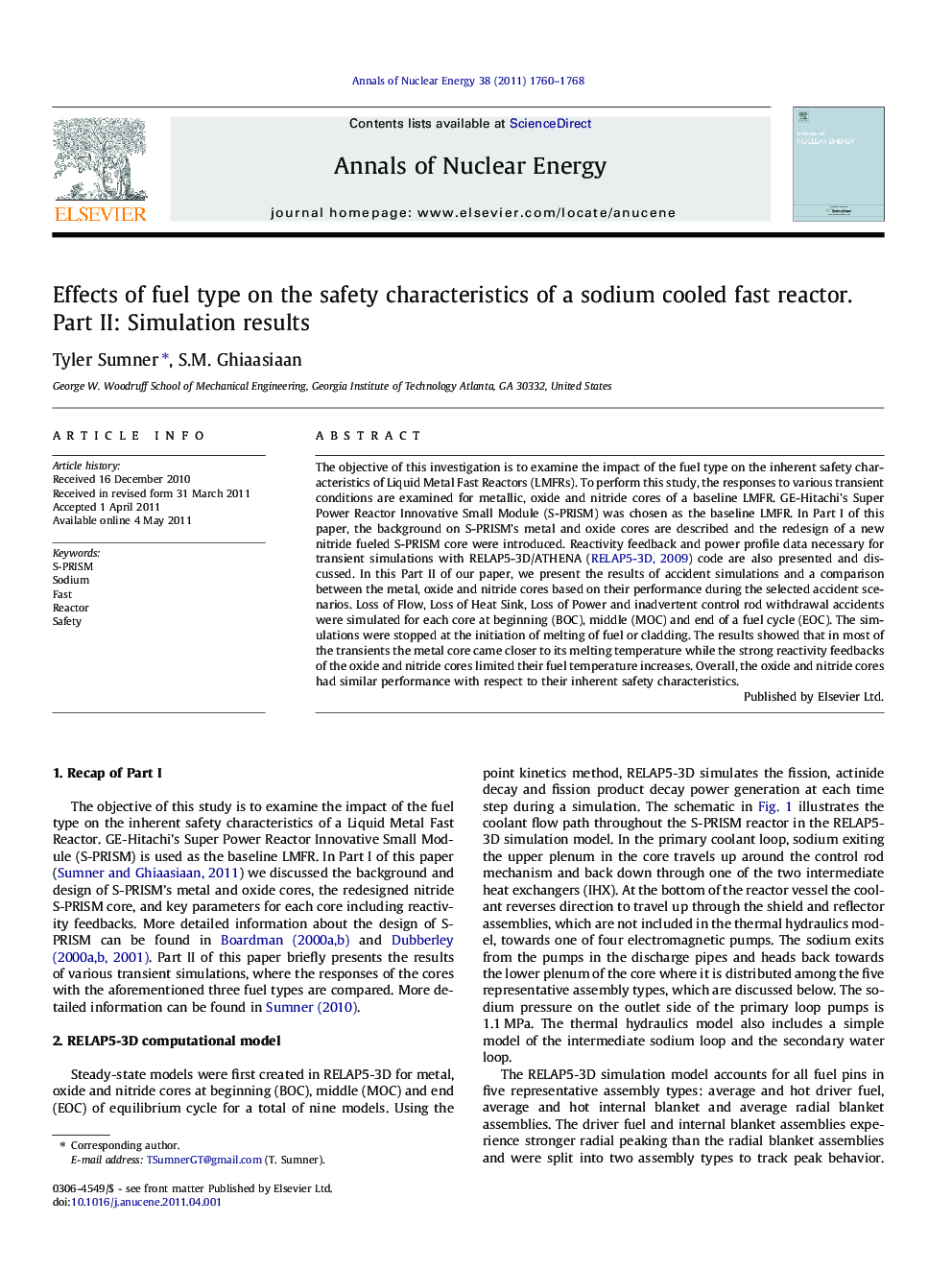| Article ID | Journal | Published Year | Pages | File Type |
|---|---|---|---|---|
| 1729302 | Annals of Nuclear Energy | 2011 | 9 Pages |
The objective of this investigation is to examine the impact of the fuel type on the inherent safety characteristics of Liquid Metal Fast Reactors (LMFRs). To perform this study, the responses to various transient conditions are examined for metallic, oxide and nitride cores of a baseline LMFR. GE-Hitachi’s Super Power Reactor Innovative Small Module (S-PRISM) was chosen as the baseline LMFR. In Part I of this paper, the background on S-PRISM’s metal and oxide cores are described and the redesign of a new nitride fueled S-PRISM core were introduced. Reactivity feedback and power profile data necessary for transient simulations with RELAP5-3D/ATHENA (RELAP5-3D, 2009) code are also presented and discussed. In this Part II of our paper, we present the results of accident simulations and a comparison between the metal, oxide and nitride cores based on their performance during the selected accident scenarios. Loss of Flow, Loss of Heat Sink, Loss of Power and inadvertent control rod withdrawal accidents were simulated for each core at beginning (BOC), middle (MOC) and end of a fuel cycle (EOC). The simulations were stopped at the initiation of melting of fuel or cladding. The results showed that in most of the transients the metal core came closer to its melting temperature while the strong reactivity feedbacks of the oxide and nitride cores limited their fuel temperature increases. Overall, the oxide and nitride cores had similar performance with respect to their inherent safety characteristics.
► Transients simulated with RELAP5-3D/ATHENA for S-PRISM sodium cooled fast reactor. ► Transients were simulated for metal, oxide and nitride fueled cores. ► The metal core displayed the smallest margin to fuel melting. ► The oxide and nitride cores had similar inherent safety characteristics. ► Part II includes the results of the transient calculations.
